

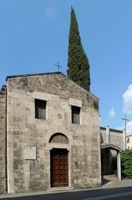
The church was built on Roman foundations from materials retrieved from Roman and early Christian buildings. Pope Gregory IX confirmed it as a possession of the Abbazia di San Pietro in Valle in 1231. It was seriously damaged during Second World War and largely rebuilt in 1949, although in a style close to the original. The portal dates to the 15th century but the two windows above are modern and spoil the appearance of the facade. A large chapel was built to the right of the church in the 1960s.

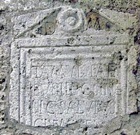
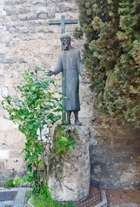
-
✴he sweetened the sour wine of the priest at San Cristoforo; and then
-
✴he raised to life a boy who had been crushed.
Interior
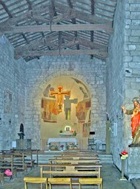
The interior, which is in the form of a single nave with a semi-circular apse, preserves some interesting frescoes, although they are (as one might expect) badly damaged.
Water stoup (16th century)
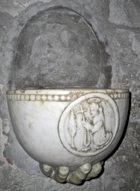
Frescoes in the apse (15th century)
These frescoes include:
-
✴SS Sebastian and Christopher (1487), on the left; and
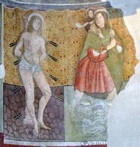
-
✴the Madonna and Child with SS Leonard, Antony Abbot and another saint, on the right.
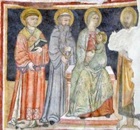
SS Sebastian, Christopher and Roch (15th century)
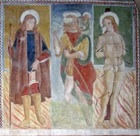
Nativity and bishop saint (15th century)

Unidentified saint (1499)
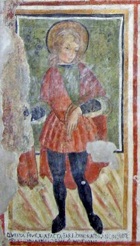
Two saints (14th century)
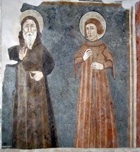
St Bernardino of Siena (15th century)
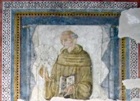
Fresco Fragments (15th century)
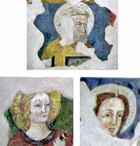
Frescoes on the counter-façade (15th century)
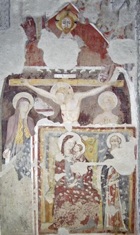
-
✴Christ in judgement;
-
✴the Crucifixion with the Virgin and St John the Evangelist; and
-
✴the Madonna and Child enthroned with St Antony Abbot.
Risen Christ (15th century)

Madonna and Child (15th century)

